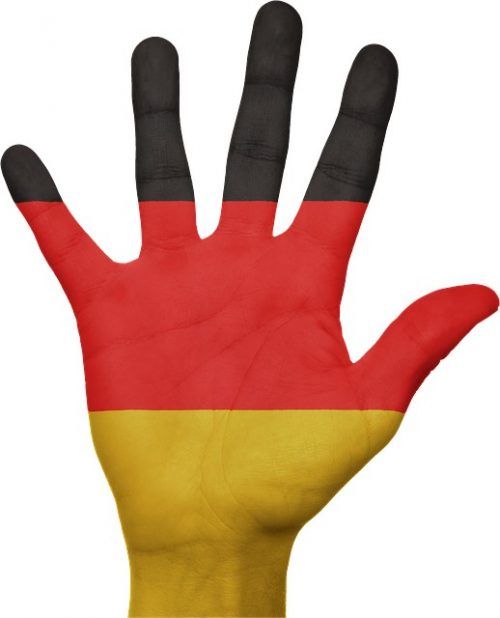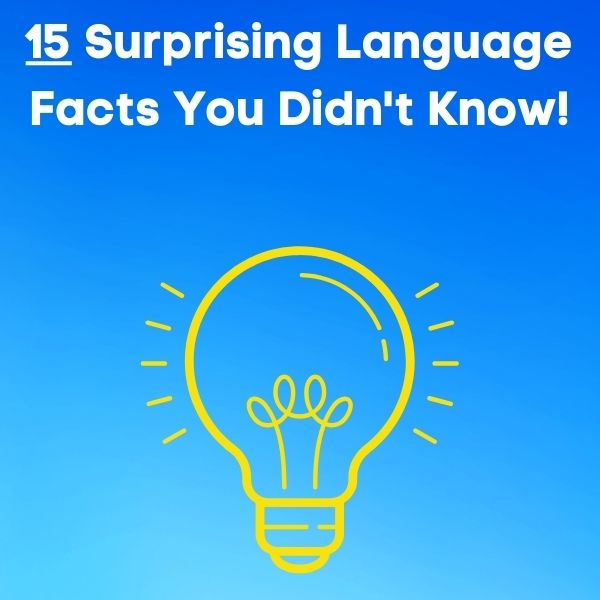The 5 Easiest (And Cheapest) Languages To Learn Online
Choosing the “right” second language to learn is an important step in your language learning journey, and can determine how quickly you pick things up, how much you retain, and even how long you persevere with your chosen language.
You’ll want to take into consideration a number of factors that make the language right for you, and that can mean choosing a language for its ease and accessibility. Some of this will be subjective, depending on your language goals, your reasons for learning, your location, and access to resources.
There are some things that do, however, make some languages easier to learn than others, and we’ll explore them now.
What makes a language easy to learn?
Cognates
Definition: If a language contains many words that have the same root as those in your native tongue, i.e., if both languages derived from the same “parent” language, such as Latin, these are called cognates.
They usually have the same sound, similar spelling, and the same meaning in related languages, making it easy for a language learner to remember words.
Example: gratulieren in German; congratulate in English.
The same writing system
Definition: A language that uses the same or similar alphabet as your native language will be a thousand times easier to learn than one that doesn’t. Learning new writing systems on top of everything else you have to learn will bog down the learning process.
Example: manzana in Spanish; apple in English vs яблоко in Russian.

Regular, easy to understand grammar
Definition: It’s important to note that all natural languages have some aspect of irregularity in their grammar. Some languages, however, use more complex grammar than others, and for a native English speaker, many of whom simply aren’t even taught the grammar of their own language, this can get very difficult.
Choosing a language whose grammar doesn’t differ too much from your native one will ease you into the learning process a lot more smoothly.
Example: Esperanto vs Latin.
Phonetic, easy to pronounce
Definition: A language is phonetic when its words are pronounced the way they’re spelt. Letters usually have just one sound, and don’t change depending on where they appear in a word. This makes the language easy to pronounce for newcomers, and makes it less daunting.
Example: “frutas” in Spanish; “früchte” in German vs “(des) fruits” French (although it’s spelt the same as its English equivalent, it’s not pronounced at all the same!).
Access to resources
Definition: Accessibility is a big one, particularly for those who are teaching themselves. A language becomes instantly easier to learn when there are plenty of resources available.
Courses on and offline, apps, reading material, media etc. And the more ubiquitous the language, the more likely you are to find cheap or free resources.
Example: French vs Irish.

Many native speakers
Definition: This also concerns accessibility. When learning a language, it’s imperative that you seek out native speakers with whom you can practice your speaking skills. If you’re in a country where your target language is spoken, then you have ample opportunity to use what you’ve learned.
Problems can arise when you’re not in your target language country, there aren’t enough native speakers where you live, and, even worse, the language doesn’t have enough native speakers in general.
Example: English vs Estonian.
The easiest languages to learn, and why you should consider starting with one of them
A note about English
For obvious reasons, I didn’t include it on the list. If you’re reading this article, it’s assumed that you already know how to speak and understand English, and so it would make little sense to mention it here.
It does go without saying that due to English’s ubiquitous nature, and the fact that most native English speakers are monolingual, it would be at the top of the list in terms of ease and accessibility; any learners of the language would have plenty of opportunity to practice.
Languages in order, starting from the easiest
| ESPERANTO | cognates; same writing system; easy grammar; phonetic; plenty of resources |
| SPANISH | cognates; same writing system; reasonable grammar; phonetic; many native speakers; plenty of resources |
| FRENCH | cognates; same writing system; reasonable grammar; many native speakers; plenty of resources |
| ITALIAN | cognates; same writing system; reasonable grammar; many native speakers; reasonable amount of resources |
| GERMAN | cognates; same writing system; phonetic; many native speakers; plenty of resources |
1) Esperanto
Although Esperanto is a constructed language, and has the fewest number of speakers than any of the languages on the list, it’s a great language to start with because it’s super easy to learn.
In terms of grammar and vocabulary, you can learn the grammar in a week (seriously!), it’s very easy to pronounce, and most of its words derive from other European languages.
It’s also agglutinative, which basically means words are stuck together to form new words. This makes longer, more complex words easier to understand if you know the smaller words used to construct them.
There’s a large online community of learners, experts and even native speakers (denaskuloj) from all over the world, all excited to meet and speak with you. And the community is so dedicated to getting more people speaking, that they’ve created lots of free resources. Check out the online community Lernu!
Though media is scarce, there’s more than enough out there to get you fluent in no time.
Read my post Why you should learn Esperanto, where I go into greater detail about the benefits of learning the language.

2) Spanish
Spanish is my second choice. 30 – 40% of English words have Spanish cognates. This will help with remembering vocabulary. It’s also highly phonetic and won’t present you with too many pronunciation issues (minus the rolled R) .
There are nearly 500 million native Spanish speakers worldwide, with close to 100 million more who speak it as a second language. Almost a whole continent (a beautiful one at that) speaks Spanish. You’ll always be able to find speaking partners.
There’s plenty of cheap and free content for all learning levels. If you’re in the US, or have access to a VPN, you can watch Latin-American TV shows all day long on sites like Telemundo. Many games and movies have been dubbed and/or translated into Spanish.
Cheap novels can be purchased from Amazon, both physical books and eBooks.

3) French
Although French isn’t very phonetic, there are aspects of it that make it relatively easy to learn compared to other languages:
Roughly 30% of English has French cognates. English even uses full French words that many native English speakers might not know are French! Example: the French word for “to remember” is souvenir. Sound familiar?
There are 275 million French speakers across the world. You can find native speakers on 3 continents — Europe, Africa, and North America (Canada).
The more global speakers a language has, the more diverse the content available. There are a plethora of free and cheap resources online, plenty of native media on Youtube and some of the big streaming services.
Check out the cool, free streaming app Arte, which not only has French content with subtitles, but offers content in 5 other European languages.
If you were born or raised in the UK, the proximity to France, and the two countries’ long shared history means that most adults will have been exposed to French from childhood – whether in school, or on short breaks to France. Thus, you’ll likely know more French words than you realize, giving you a head start.

4) Italian
It should come as no surprise that yet another Romance language makes the list. This is due to it sharing the same parent language in Latin. Pronunciation-wise, Italian isn’t as phonetic as Esperanto or Spanish, but it also isn’t as bad as French!
There are 64 million Italian speakers, the vast majority of whom live in Italy. You’ll be able to find speakers in neighboring European countries, like Switzerland, some in North America, and even a small community of retirees in Malindi, Kenya.
Unlike with most of the other languages on the list, the vast majority of native Italians don’t speak English, so if you have to communicate in Italy, you’ll be forced to use the Italian you’ve learned. A plus.
There are enough online resources available that won’t break the bank, though many of the Italian streaming services are country locked, meaning if you’re outside of Italy, you might have to use a VPN to access them.
Italian just sounds melodic! Okay, so that might not be as important as some of the other aspects contributing to a language’s ease, but it does help. I’d go so far as to say the more melodic your target language is, the more memorable it will be.

5) German
I know what you’re thinking: German? Are you insane? German’s hard!
Yes, some aspects are. But, there are plenty of things that make it more accessible to English speakers than you might think:
Roughly 25% of English shares cognates with German. There are many words, for example, that are identical, or extremely close in the two languages. Vater/father, Mutter/mother, Apfel/apple, etc.
And consider the phrase “Blut ist dicker als Wasser”. When pronounced, it sounds almost identical to its English meaning – “Blood is thicker than water”.
German grammar, whilst not very easy at first glance (there are 6 ways to say “the”. Yes, 6!), is pretty regular once you learn it.
German, just like Esperanto, is agglutinative and highly phonetic. So all of those incredibly long German words you’ve seen are simply a combination of smaller, easier words. Everything is pronounced as it’s written.
For example, Einbahnstraße – one-way street.
A neat feature that no other language has, is that all nouns are capitalized, making them instantly identifiable, thus making sentences easier to parse at first glance.
There are nearly 100 million native speakers. Though the majority reside in Europe, you can find small communities of German speakers in America, where Amish communities speak it fluently.
Resources and content abound. There are plenty of German soaps and dubbed cartoons on YouTube (check out Verbotene Liebe. An oldie but a goodie). As the language is so popular, many of the free language apps offer German courses. Duolingo’s German course, for example, is pretty good.
Second-hand and digital books are available to buy from eBay and Amazon, and are downloadable from major eBook stores. There are lots of audiobooks, many of which you can find on Youtube by searching for “hörbücher”.
For a break down of the German language, check out the post German Language Basics For Beginners.

Conclusion
This list, while subjective, does illustrate some of the things that make a language easy, and should be taken into consideration when choosing a new language to learn. The worst thing that you could do as a newcomer to foreign language learning, is choose a language that has, by its nature, created multiple barriers to entry.
The great thing about the languages on this list is that if you learn one, it will give you a “language discount”, making other similar languages somewhat intelligible.
So if you haven’t yet decided which language to learn, maybe try one of these five out for size. You can always move on to more complex ones once you’re fluent in your first.




